7 Mistakes to Avoid With Your Contest Follow-Up Email Sequence
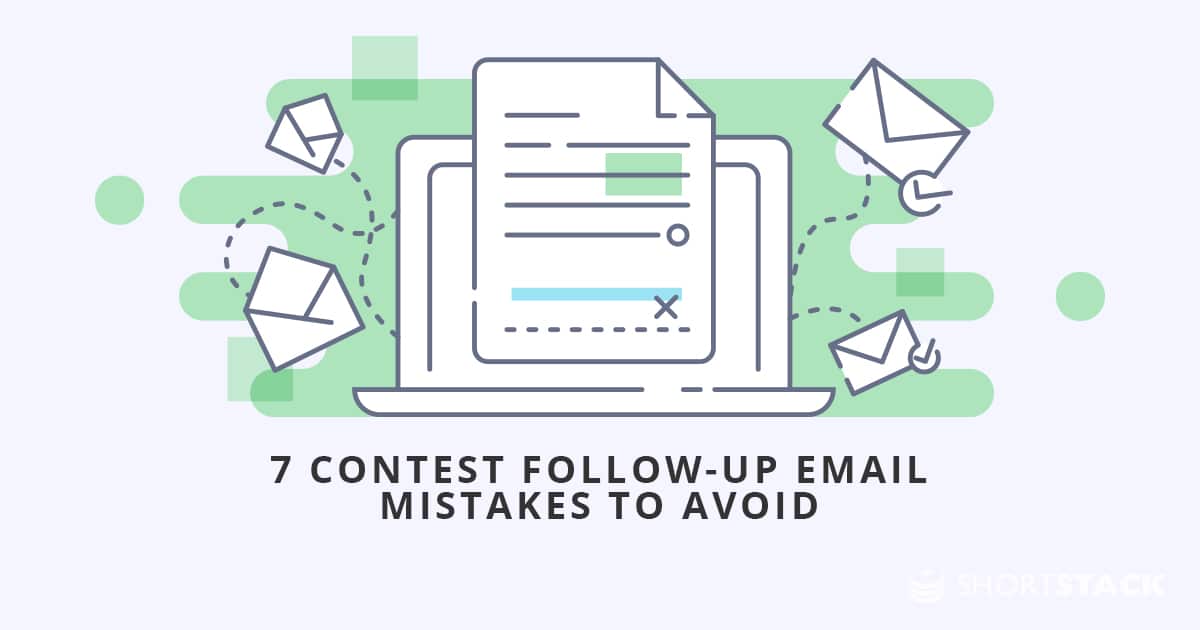
Learn how to create an effective email follow-up sequence for contest entrants to build trust, credibility, and increase buying propensity.
The series of emails you schedule to follow-up with entrants of a contest is critical to a campaign’s return on investment.Either you build trust, credibility, and buying propensity… or your new leads unsubscribe, never to be seen again.The thing is, email marketing is still one of the most personalized ways of communicating with new prospects. And contests are proven to grow your prospect list faster than many other tactics. But handled incorrectly, your follow-up email sequence could be perceived as intrusive and annoying - the last feeling you want to be associated with your brand.It’s a balancing act. Sending the right type and cadence of emails will accelerate the buying journey of your new leads. Yet, the wrong sequence could tarnish your brand forever.To prevent the leads of a contest from unsubscribing - or worse, negatively commenting about your brand - here are 7 mistakes to avoid with your contest follow-up sequence:
#1. Taking too long to announce the winners (or not doing it at all)
Believe it not, many brands either forget to announce a contest winner or take an uncomfortable amount of time to do so. When people hand over their contact details for the chance to win something, they expect to be informed of the outcome. Even if they happen to be one of the unlucky contestants who don’t win.By not announcing the winner(s) of a contest promptly, you build discontent with entrants and they become irritable. At that point, you find yourself scrambling to recover their trust - which you probably haven’t even gained at this point anyway - rather than strengthening the relationship.Make sure you clearly state on the contest entry page when you will announce the winner(s) and stick to your promise! There is nothing worse than feeling like you have been hoaxed into joining a mailing list and then receiving rapid-fire emails from a brand you have no association with. Don’t be that brand.
#2. Failing to introduce the brand
The majority of prospects who enter a contest won’t know the first thing about your brand. The contest promotion and landing page are their first interaction. So, you need to indoctrinate these new prospects into your world. Help them understand who you are, what you stand for, and where you’ve come from.Constructing a brand story across the first few emails of an automated sequence will familiarize new subscribers with your brand and remove trust barriers. If you’ve attracted the right prospects to your contest, the brand’s story will resonate and create an emotional connection.Too often brands skip this step and assume new prospects already know who they are. They put the onus on the individual to research their brand before signing up. In reality, these people were just excited by the free stuff you were giving away and have no idea who you are. It’s up to you to make them care.This welcome email from meditation app, Headspace, does an excellent job of introducing the brand:
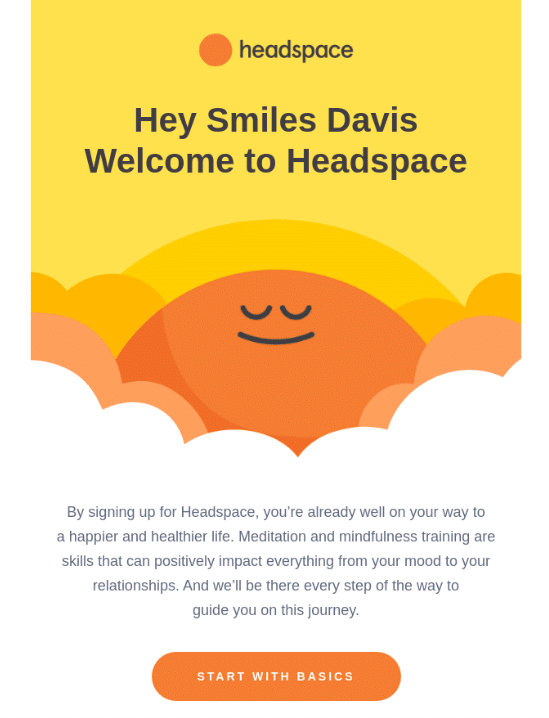
Introductory email from Headspace.They’ve even used the bottom section of the email to build trust with social proof about their product:

Use of social proof in an introductory email.
#3. Sending impersonal communication
Marketing personalization is now an expectation, not a choice. Personalized emails result in a six times higher transaction rate and yet more than 70% of brands fail to personalize this form of communication.Without personalization, your emails become, well, impersonal. They lack feeling, connection, and individualization. Each subscriber feels like just another cog in a big, bad, brand machine.Your contest follow-up sequence needs to harness the data you collect to personalize the experience for every prospect. It’s about going beyond first name placeholder tags and referring to individuals based on their website behavior, buying history, geography, contest response, and more.Follow up email sequences can do most of this automatically with smart behavioral triggers that segment subscribers and take them down personalized email paths. You just need to put in the work upfront and let the magic happen.Netflix is an example of a brand that uses its data to great effect with personalized email recommendations:
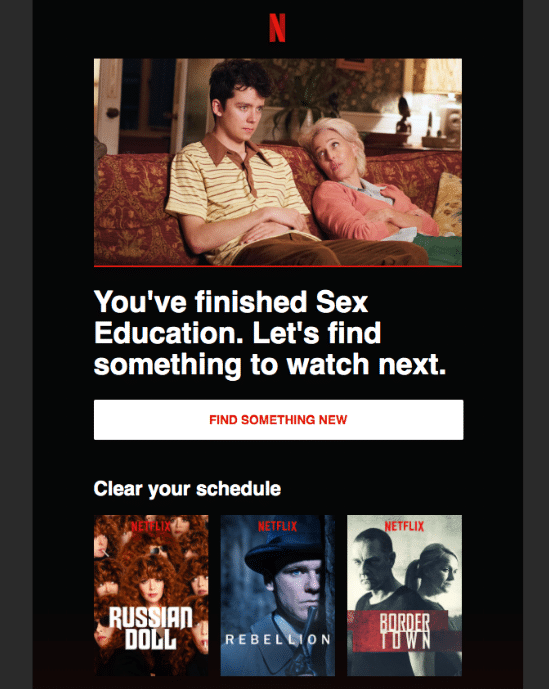
Personalized email from Netflix.
#4. Neglecting split tests and optimization
A fundamental flaw in marketing strategies globally is a lack of testing. We make strategic assumptions based on experience, team collaboration, and gut-feel and rarely test whether or not those assumptions are accurate. Sometimes, “expertise” and knowledge of the customer will get you a few wins, but in the long run, it’s not a repeatable and sustainable way to market a brand.The only way to prove whether or not something is working is to run split tests, adapt your approach, optimize, and test again. That’s all marketing really is - a series of tests run over and over again.When it comes to your contest follow-up sequence, testing can be a complex process. To make valid changes to any component of a sequence, you need a high volume of data across two specific elements that offer a slight variation. For example, this may be two subject lines, two images, two calls-to-action, etc. The idea is that you test one single component at a time with everything else being equal, adapt, and test again.
#5. Assuming they’ve seen every email
There is any number of reasons that someone doesn’t open an email you send them. Maybe it goes to the junk folder, or perhaps they accidentally archive it on their phone, or the time it turns up in their inbox is when they receive a dozen other emails and they simply miss it. On top of this, even when they do open the email, the chance of them reading every single word you type is near-on impossible.So, then, why do we send second, third, and fourth follow-up emails assuming a prospect has opened and read all preceding emails?This assumption is a common mistake made with contest follow-up sequences and one that can be easily avoided. All you need to do is give a short recap in each email of what has happened up until that point. Alternatively, you could provide embedded links to all the previous messages, so that people can catch up if something piques their interest. Whatever method you choose, each email must reset the context of your relationship.
#6. Being too persistent (or not persistent enough)
The number of emails you send and their frequency is a balancing act. Too many in a short period of time and people will unsubscribe through sheer frustration and information overload. Too few, and you’ll lose their attention or fail to make an adequate impact on the propensity to buy.Getting the frequency of emails just right with a contest follow-up sequence is perhaps the most complex mistake to fix in this list. Every industry and customer profile will be different in the way they interact and engage with email communication. The only way to truly know the ideal email cadence is to speak with your customers and test the engagement rate during a sequence.The diagram below depicts an interesting take on email frequency in an autoresponder. Basically, it’s saying the colder the relationship the more frequent the emails should be.
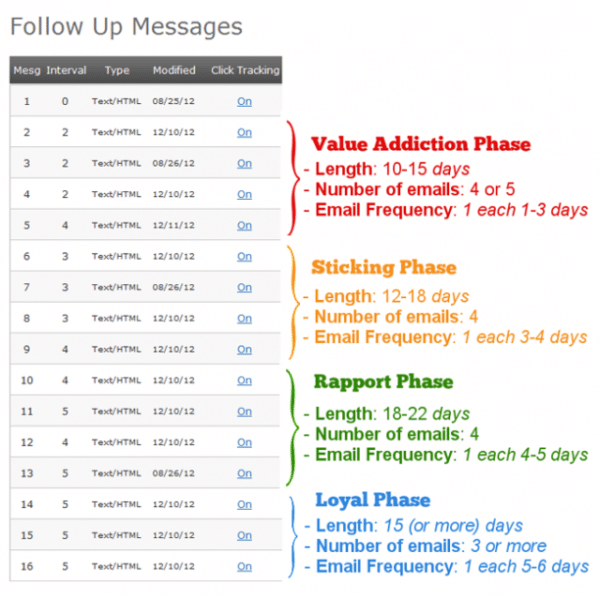
Email frequency of an autoresponder.Most brands are emailing too infrequently after someone enters a contest. You should work double time to build brand recognition and trust in these early stages.
#7. Forgetting about social proof
I’ve spoken several times about “trust” and “credibility” in this article. In the end, the whole purpose of your autoresponder is to create these two feelings with prospects. Once a prospect knows, likes, and trusts you, they are more likely to buy what it is you have to offer.But how do you establish trust with a complete stranger?Well, instead of talking about how great your products or services are, have others do it for you. Customer testimonials, expert accreditations, and media recognition are three examples of “social proof” that aid in the trust-building process. Prospects are far more likely to believe something one of your customers has to say when compared to someone in your marketing department.Here is an email from bedmaker, Eight Sleep, dedicated to establishing trust with social proof:
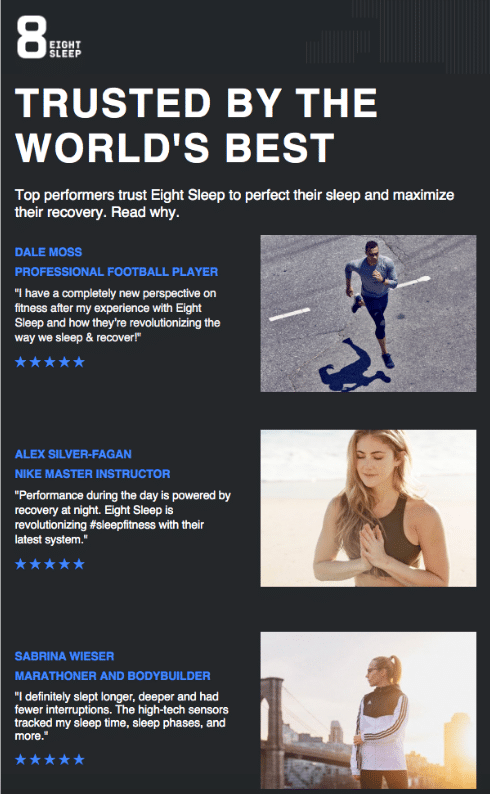
Social proof email example.
Conclusion
If you architect the perfect combination of emails that delivers personalization, social proof, storytelling, and appropriate context, it will speed up the buying journey of new leads.On the other hand, if you fail to do these things and make the mistakes discussed in this article, it can deteriorate the reputation of your brand. This makes the whole contest campaign a waste of time and resources.Next time you run a contest, how do you plan on engaging new leads with an email follow-up sequence? How will you avoid the mistakes discussed above?
Create your first follow-up email now
Get Started Today. It’s free and we don’t need your credit card.




